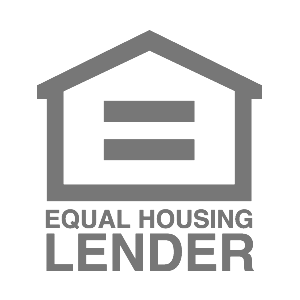
If you’re a homeowner who’s having trouble with debt, home equity could be the key to financial relief.
For homeowners with equity in their homes—meaning your house is worth more than what you owe on your mortgage—taking out a home equity loan (HELoan) or home equity line of credit (HELOC) could give you the cash you need to reduce or eliminate certain debts.
There are downsides to using home equity for debt consolidation, however. Unlike credit cards or personal loans, you’ll have to use your home as collateral, and you may face high fees and fluctuating interest rates. For those reasons, you’ll want to review the numbers before tapping into your equity.
How to use home equity to pay off debt
Taking on new debt in order to pay off old debt might seem like a waste of time and resources, but there are circumstances when using home equity to pay off debt could be a good move.
Taking out a HELoan or a HELOC could reduce the number of debt payments you have to make each month, and get you into lower interest rates or monthly payments than you currently have.
Since HELoans and HELOCs are backed by collateral (your home), they often have lower rates than other debt, especially credit cards. For comparison, in early 2023 the average interest rate for credit cards was above 20% APR, while the average rate for HELoans was below 8% APR. The main downside of home equity financing, however, is that you could face foreclosure if you fall behind on payments.
If you’re interested in using a HELOC or home equity loan for debt consolidation these are the steps to take:
1. Review your debt. Add up your debt balances to identify how much you need to pay off, and to help determine if your home equity payments will be lower than your current debt payments.
2. Shop around. Compare home equity lenders to see what they offer, including interest rates, repayment terms, fees and loan prequalification.
3. Apply for financing. This step includes home appraisal, review of your credit and submitting proof of income and home insurance.
4. Consolidate debt. If approved, use the funds to pay off your old debt.
5. Begin payments. Begin making monthly payments on your new home equity financing.
Pros and cons of using home equity for debt consolidation
HELOC
A home equity line of credit is a credit card-like account. With HELOCs, you can withdraw a certain percentage of your home equity and repay the money an unlimited number of times during the initial “draw period”—usually 10 years. After that you’ll enter the repayment period, which can be up to 20 years.
Pros
- Withdraw funds as needed
- Only pay interest on your outstanding balance
- Low initial payments
Cons
- Missed payments could lead to foreclosure
- Interest rates are typically variable
- There may be minimum withdrawal requirements
- Minimum credit score may be required
- Closing costs and other lender fees
HELoan
A HELoan is a second mortgage that lets you borrow a percentage of your home’s equity—usually up to 80%—as a lump sum. Interest rates and payments are typically fixed, and you might have anywhere from five to 30 years to repay the loan.
Pros
- Receive a lump sum to pay off debt
- Interest rates are typically fixed
- Average APR is generally lower than credit cards and other debt
Cons
- Missed payments could lead to foreclosure
- Minimum credit score may be required
- Closing costs and other lender fees
Alternatives options for debt consolidation
Personal loan
Personal loans, which may be referred to as debt consolidation loans or signature loans, can be used to consolidate debt. While the rates may not be as low as the APRs on home equity financing, personal loans do not require collateral.
Balance transfer credit card
Balance transfer credit cards are meant to be used for transferring balances to a card that usually has a lower APR for a limited time. These cards usually have 0% APR for one year.
The downside is that you’ll likely have to pay a balance transfer fee of 3% or more on the amount you transfer, and you’ll be charged interest on any new transactions.
Debt management plan
If you’re looking for a solution that doesn’t involve new financing, consider a Debt Management Plan (DMP). Nonprofit credit counseling agencies offer DMPs to help borrowers manage and pay off debt.
If you qualify for a DMP, you can consolidate multiple debts into one monthly payment and you may be able to reduce your interest rates, fees, or total amount due each month. The downside is that you may have to close all of your credit card accounts.
Is a HELoan or HELOC right for you?
There are several alternatives to using your home equity for debt consolidation. Compared to other solutions, like an expensive 401(k) loan or hiring a high-risk debt settlement company, tapping into your home equity might seem like the obvious choice.
But there are still risks to consider. Lender fees could eat into the benefits of consolidating your debt, and if your HELoan or HELOC payments become unaffordable, you could lose your home to foreclosure.
If you’re seriously considering using home equity for debt consolidation, be sure to do the math to ensure the fees and payments fit into your budget for the long term.
Written by Sarah Brady
Sarah Brady is a financial writer and speaker who’s written for Forbes Advisor, Investopedia, Experian and more. She is also a former Housing Counselor (HUD) and Certified Credit Counselor (NFCC).
Read more:
All personal loans made by WebBank.
IMPORTANT INFORMATION ABOUT PROCEDURES FOR OPENING A NEW ACCOUNT.
To help the government fight the funding of terrorism and money laundering activities, Federal law requires all financial institutions to obtain, verify, and record information that identifies each person who opens an account.
What this means for you: When you open an account, we will ask for your name, address, date of birth, and other information that will allow us to identify you. We may also ask to see your driver’s license or other identifying documents.
Eligibility for a home equity loan or HELOC up to $500,000 depends on the information provided in the home equity application. Loans above $250,000 require an in-home appraisal and title insurance. For HELOCs borrowers must take an initial draw of $50,000 at closing. Subsequent HELOC draws are prohibited during the first 90 days following closing. After the first 90 days following closing, subsequent HELOC draws must be $1,000 or more (not applicable in Texas).
The time it takes to get cash is measured from the time the Lending Partner receives all documents requested from the applicant and assumes the applicant’s stated income, property and title information provided in the loan application matches the requested documents and any supporting information. Spring EQ borrowers get their cash on average in 26 days. The time period calculation to get cash is based on the first 6 months of 2022 loan fundings, assumes the funds are wired, excludes weekends, and excludes the government-mandated disclosure waiting period. The amount of time it takes to get cash will vary depending on the applicant’s respective financial circumstances and the Lending Partner’s current volume of applications.
Spring EQ cannot use a borrower’s home equity funds to pay (in part or in full) Spring EQ non-homestead debt at account opening. For HELOCs in Texas, the minimum draw amount is $4,000. To access HELOC funds, borrower must request convenience checks.
Interest rates may be adjusted based on factors related to the applicant’s credit profile, income and debt ratios, the presence of existing liens against and the location of the subject property, the occupancy status of the subject property, as well as the initial draw amount taken at the time of closing. Speak to a Prosper Agent for details.
Qualified applicants may borrow up to 95% of their primary home’s value (not applicable in Texas) and up to 90% of the value of a second home. Home equity loan applicants may borrow up to 85% of the value of an investment property (not applicable for HELOCs).
All home equity products are underwritten and issued by Spring EQ, LLC, an Equal Housing Lender. NMLS #1464945.
Prosper Marketplace NMLS Prosper Marketplace, Inc. NMLS# 111473
Licensing & Disclosures | NMLS Consumer Access
Prosper Funding LLC
221 Main Street, Suite 300 | San Francisco, CA 94105
6860 North Dallas Parkway, Suite 200 | Plano, TX 75024
© 2005-2022 Prosper Funding LLC. All rights reserved.


